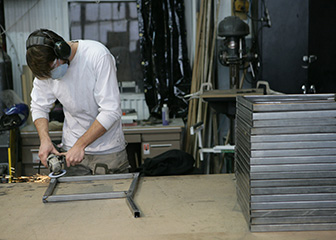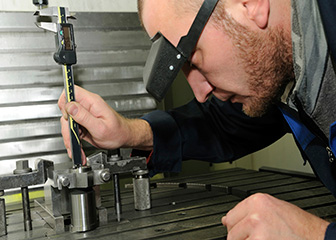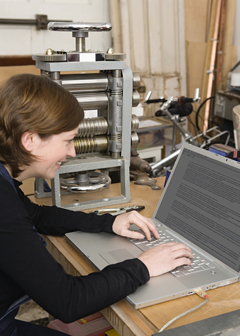How to Become a Machinist or Tool and Die Maker About this section

Machinists and tool and die makers often learn through apprenticeships.
Machinists train in apprenticeship programs, vocational schools, or community or technical colleges, or informally on the job. To become a fully trained tool and die maker takes 4 or 5 years of technical instruction and on-the-job training. Good math, problem-solving, and computer skills are important.
Education
There are many different ways to become a skilled machinist or tool and die maker. In high school, students should take math courses, especially trigonometry and geometry. They should also take courses in blueprint reading, metalworking, and drafting, if available.
Some advanced positions, such as those in the aircraft manufacturing industry, require the use of advanced applied calculus and physics. The increasing use of computer controlled machinery requires machinists and tool and die makers to have basic computer skills before entering a training program.
Training
Formal apprenticeship programs, typically sponsored by a union or manufacturer, are an excellent way to become a machinist or tool and die maker, but they are often hard to get into. Apprentices usually must have a high school diploma or equivalent, and most have taken algebra and trigonometry classes.
Apprenticeship programs consist of paid shop training and related technical instruction lasting between 4 and 5 years. Apprenticeship classes are often taught in cooperation with local community colleges or vocational–technical schools.
Although apprenticeship programs may be the best way to learn the job, a growing number of machinists and tool and die makers receive their formal technical training from community and technical colleges. These employees often learn while employed by a manufacturer that supports the employee's training goals and gives the needed on-the-job training less formally.
Apprentices usually work 40 hours per week and get technical instruction at night. Trainees often begin as machine operators and gradually take on more difficult assignments. Machinists and tool and die makers must have good computer skills to work with CAD/CAM technology, CNC machine tools, and computerized measuring machines. Many machinists become tool and die makers.
Even after completing a formal training program, tool and die makers still need years of experience to become highly skilled.
Certification
To boost the skill level of machinists and tool and die makers and to create a more uniform standard of competency, a number of training facilities, state apprenticeship boards, and colleges offer certification programs.
Completing a recognized certification program provides machinists and tool and die makers with better job opportunities and helps employers judge the abilities of new hires. Journey-level certification is available from state apprenticeship boards after completing an apprenticeship. Many employers recognize this certification, and it often leads to better job opportunities.
Important Qualities
Analytical skills. Machinists and tool and die makers must understand highly technical electronic or written blueprints, models, and specifications so they can craft precision tools and metal parts.
Detail oriented. The work of machinists and tool and die makers must be highly accurate. For example, tolerances may reach 50/1,000,000ths of an inch, which requires workers’ precision, concentration, and attention to detail.
Math and computer skills. These workers must have good math and computer skills to work with CAD/CAM technology, CNC machine tools, and computerized measuring machines.
Mechanical skills. Machinists and tool and die makers must be mechanically inclined. They operate milling machines, lathes, grinders, laser and water cutting machines, wire electrical discharge machines, and other machine tools. They also may use a variety of hand tools and power tools.
Stamina. The ability to endure long periods of standing and doing repetitious movements is important for machinists and tool and die makers.
Technical skills. Machinists and tool and die makers must understand computerized measuring machines and metalworking processes, such as stock removal, chip control, and heat treating and plating.








